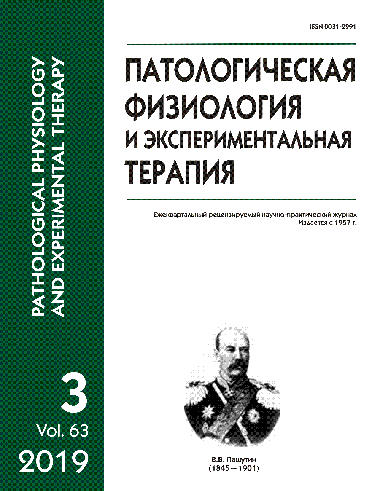Ex vivo modeling of thermotherapy in baker’s cyst
Abstract
Aim. To determine ex vivo the depth and degree of coagulation changes in tissues of Baker’s cyst induced by a uniform isothermal exposure of different duration. Methods. An experimental thermo table was constructed for the study with an option to maintain the isothermal mode of operation. The capsule of Baker’s cyst excised during the surgery was immediately divided into several fragments. One of the samples was used as control, the remaining samples were kept on the surface of the thermo table heated to 65-70°C for different time up to 60 seconds. All fragments were examined histologically. Results. The intact fragment of Baker’s cyst showed signs of chronic inflammation, such as plethoric blood vessels, mucoid swelling, and focal perivascular infiltration with lymphoid elements. In samples of the wall exposed to heat for up to 30 seconds, similar structural changes were found at the level of synovial shell in the form of pyknosis and lysis of synoviacyte nuclei. Fragments of the cyst wall heated for 60 seconds showed necrosis of the synovial layer and underlying levels showed swelling, loosening and fragmentation of collagen fibers. Severity and depth of destructive changes in the Baker’s cyst wall directly depended on duration of continuous heating. Conclusion. The study determined some regularities of changes in histological samples related to the thermal exposure. In thermal exposures of Baker’s cyst tissue lasting for up to 30 seconds, the major histological transformation included signs of destruction in the synovial layer. When the heating duration was increased to 60 seconds, only a partial disorder of collagen structure was observed in the cyst wall.






